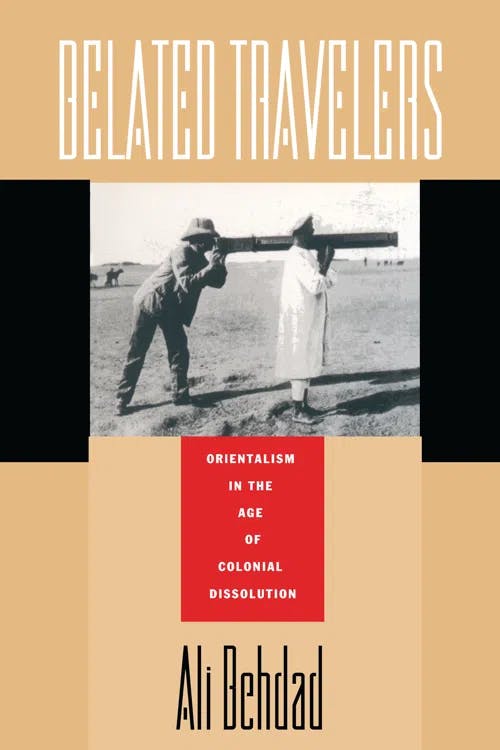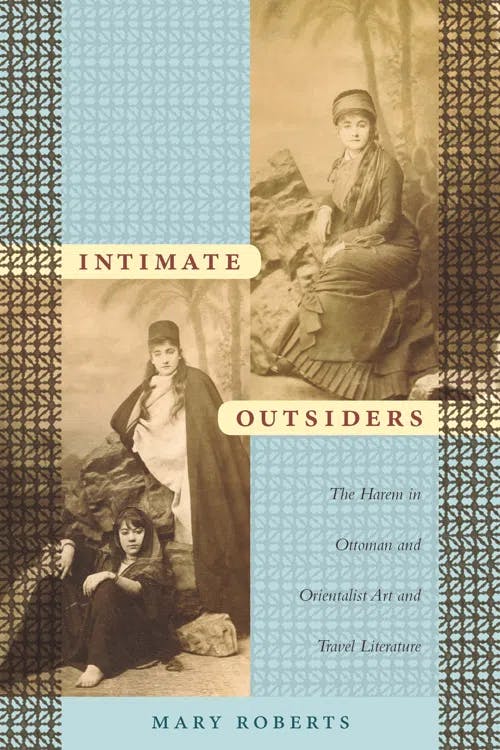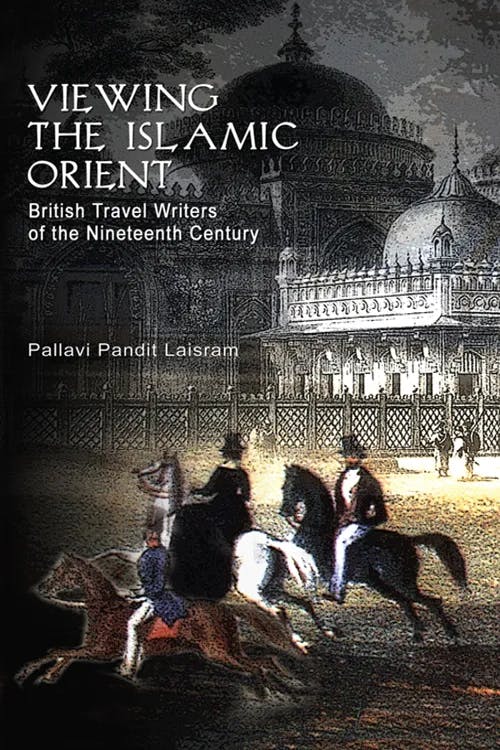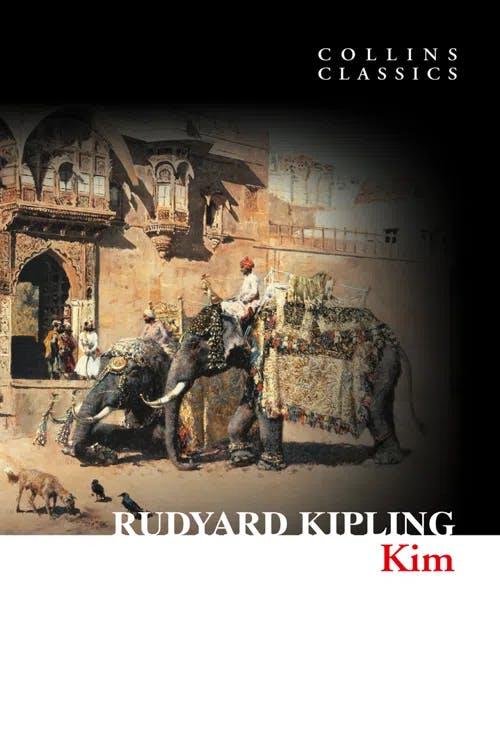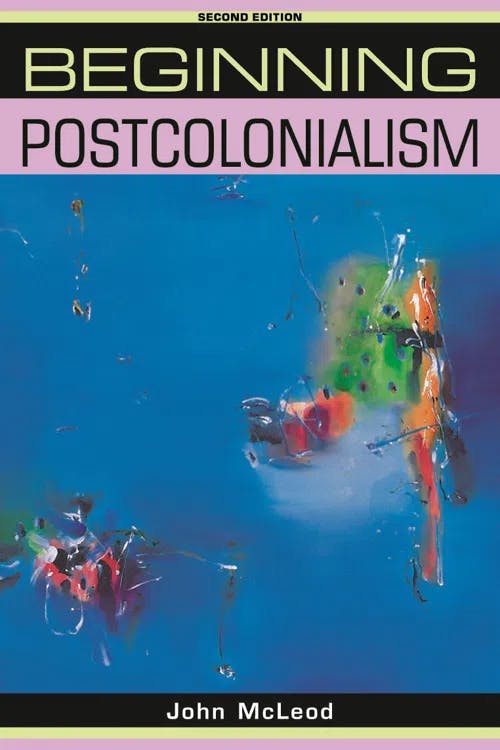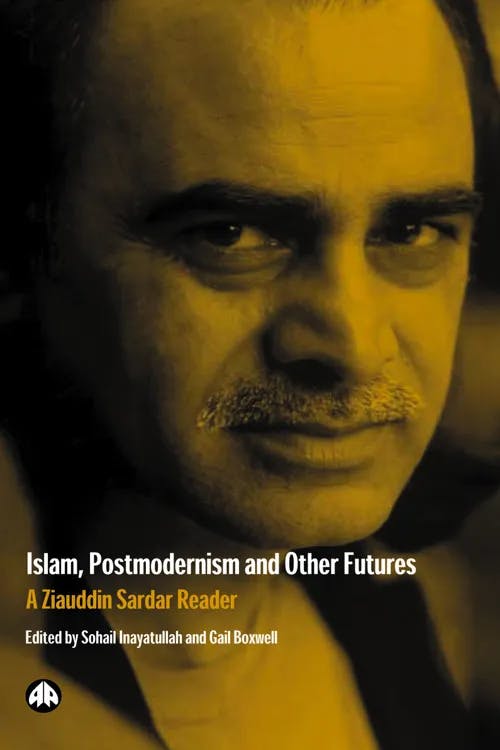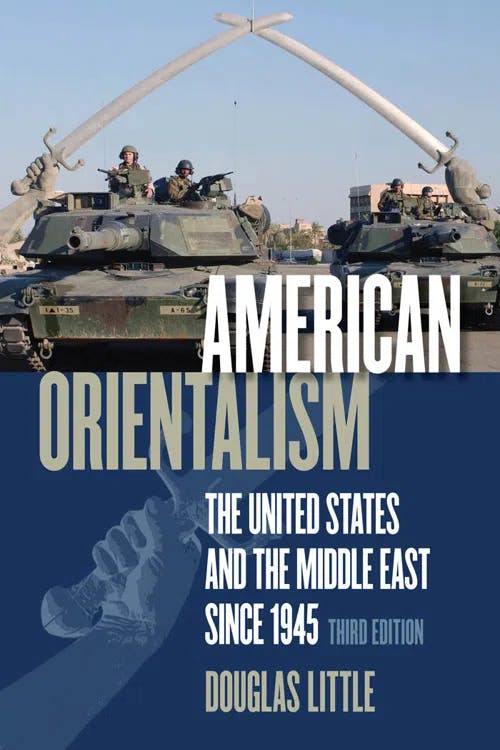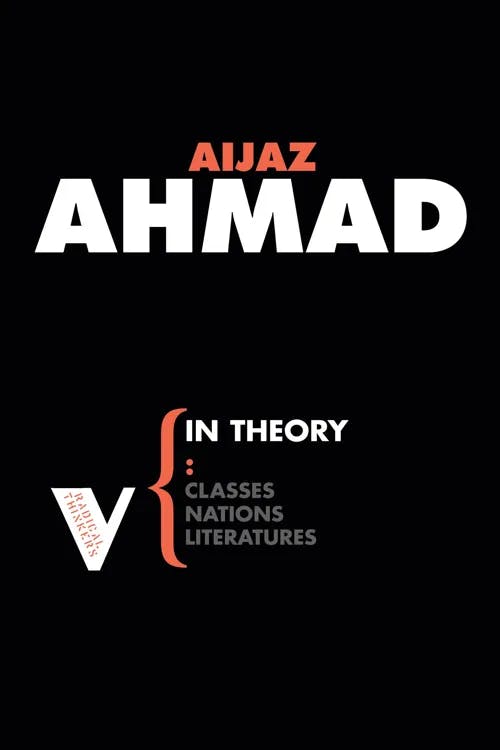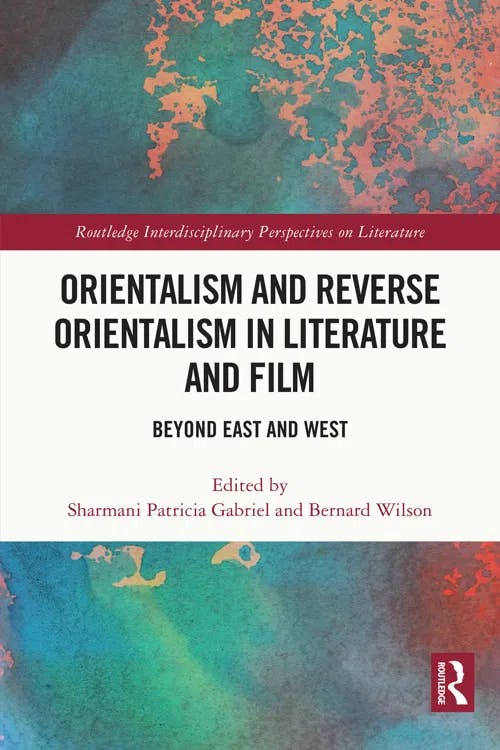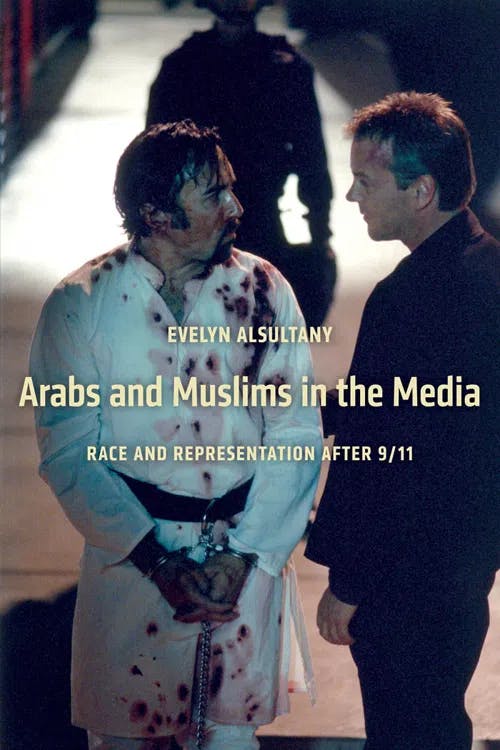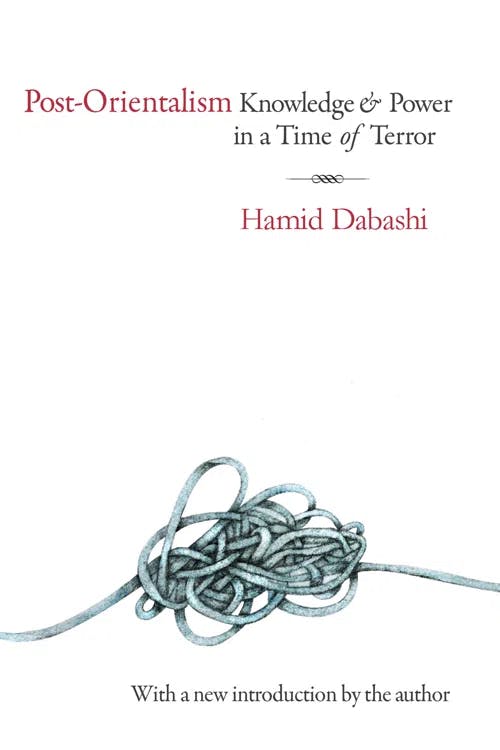What is Orientalism?
PhD, English Literature (Lancaster University)
Date Published: 28.09.2023,
Last Updated: 16.01.2024
Share this article
Constructing the East
Jean-Léon Gérôme’s painting Snake Charmer (c. 1879) depicts a litany of Middle-Eastern stereotypes (see Figure 1). A group of men, clad in attire from an assortment of Middle-Eastern countries, gather around a nude snake charmer in a non-specified space which combines the interiors of the Topkapı Palace in Istanbul and the Mosque of Amr ibn al-As in Cairo. This depiction of the Middle East, as exotic, immoral, and dangerously other, is an example of Orientalism, a concept within postcolonial studies.

Fig. 1. Snake Charmer (c.1979, public domain, via Wikimedia Commons)
Orientalism is a critical term used to describe how the West (the “Occident”) seeks to construct images and create discourses around the East (the “Orient”) as part of an attempt to dominate it. The Orient in this context is a blanket term used to describe a range of countries in the East, though it predominantly refers to Arab and Islamic countries. We can see this in practice throughout history through the representations of the East in Western art and literature.
The term “Orientalism” is established in Edward Said’s book of the same name (first published in 1978), where he identifies three distinct meanings of the term:
- The study of countries in the East (or “the Orient”), often referred to as Oriental Studies. Those who work in this area, such as anthropologists, sociologists, and historians, are considered Orientalists.
- A “style of thought based upon an ontological and epistemological distinction made between” the East (the Orient) and the West (the Occident). This presumed distinction between the East and the West has been a “starting point for elaborate theories, epics, novels, social descriptions, and political accounts concerning the Orient, its people, customs, 'mind,' destiny, and so on.”
- The various ways of “dominating, restructuring, and having authority over the Orient.”
(Orientalism, excerpted in Contemporary Postcolonial Theory, 2021)
This final definition is the one Said devotes the most attention to in his work. Said was heavily influenced by Antonio Gramsci’s work on cultural hegemony and Michel Foucault’s theory of power. Both Gramsci and Foucault’s work revealed how power is attained and maintained by constructing knowledge. For Said, the East (the Orient) was constructed by the West (the Occident), enabling Western powers to oppress the East. As Said writes,
The relationship between Occident and Orient is a relationship of power, of domination, of varying degrees of a complex hegemony. (1978, [2021])
The discourse created about the Orient has had a real impact on Eastern countries for centuries as Said points out:
Orientalism [...] is not an airy European fantasy about the Orient, but a created body of theory and practice in which, for many generations, there has been a considerable material investment. Continued investment made Orientalism, as a system of knowledge about the Orient, an accepted grid for filtering through the Orient into Western consciousness, just as that same investment multiplied – indeed, made truly productive – the statements proliferating out from Orientalism into the general culture. (Said, in Contemporary Postcolonial Theory, 1978, [2021])
Edited by Padmini Mongia
Orientalism [...] is not an airy European fantasy about the Orient, but a created body of theory and practice in which, for many generations, there has been a considerable material investment. Continued investment made Orientalism, as a system of knowledge about the Orient, an accepted grid for filtering through the Orient into Western consciousness, just as that same investment multiplied – indeed, made truly productive – the statements proliferating out from Orientalism into the general culture. (Said, in Contemporary Postcolonial Theory, 1978, [2021])
This system of knowledge about the Orient can be divided into latent Orientalism and manifest Orientalism. Latent Orientalism refers to “an unconscious (and certainly an untouchable) positivity” (Said, 1978, [2021]). In other words, latent Orientalism describes the ideas and attitudes about the Orient which are passed down from generation to generation. Manifest Orientalism is more overt and refers to “the various stated views about Oriental society, languages, literatures, history, sociology and so forth” (Said, 1978, [2021]). Said argues that this latter form of Orientalism is more susceptible to change:
Whatever change occurs in knowledge of the Orient is found almost exclusively in manifest Orientalism; the unanimity, stability and durability of latent Orientalism are more or less constant. (1978, [2021])
Despite the proliferation of travel and travel writing in the nineteenth century, many assumptions about the Orient, and its distinctness from the Occident, remained unchanged, highlighting the durable impact of latent Orientalism.
This guide will explore the dearth of Orientalist material in the Victorian period which reinforced colonial attitudes towards the Eastern Other, as well as how Orientalism continues today. Throughout, in keeping with Said’s work, I will be using generalized terms such as “the East,” “the Orient,” and “Oriental.” This is intentional, as the Orient created through Western constructs is an imaginative space that does not reflect the social and cultural complexity of the countries they are meant to depict. The Orient referred to by Said tends to capture Arab/Islamic countries, with a passing reference to China and the Far East.
Travel writing in the nineteenth century
The increased accessibility of travel in the nineteenth century culminated in a plethora of travelogues and travel guides about the Orient. Travel at this time was becoming more widespread due to the commercial use of steamships, the establishment of railroads in places like Cairo and Constantinople, and increased security for Westerners in countries such as India and Egypt due to British occupation. Travel writing served as another way for the West to maintain power over colonized regions. British, and French, travelers became the absolute authority on the Orient. As Said writes:
Orientalism is premised upon exteriority, that is, on the fact that the Orientalist, poet or scholar, makes the Orient speak, describes the Orient, renders its mysteries plain for and to the West. He is never concerned with the Orient except as the first cause of what he says. What he says and writes, by virtue of the fact that it is said or written, is meant to indicate that the Orientalist is outside the Orient, both as an existential and as a moral fact. (1978, [2021])
Travel writers, as Ali Behdad points out, quoted from other Orientalist travelogues, perpetuating cycles of misinformation and reinforcing stereotypes:
The large body of knowledge borrowed from orientalist travelogues provides a “field of presence” — that is, statements borrowed from another field of knowledge in a given discourse — for the tourist book: the guide quotes the statements of previous travellers, incorporates them as part of its informational apparatus and then acknowledges them as truthful representations of the Orient. (1994)
Ali Behdad
The large body of knowledge borrowed from orientalist travelogues provides a “field of presence” — that is, statements borrowed from another field of knowledge in a given discourse — for the tourist book: the guide quotes the statements of previous travellers, incorporates them as part of its informational apparatus and then acknowledges them as truthful representations of the Orient. (1994)
Behdad goes on to explain that
the tourist guide as a modern orientalist discourse is a dispersed, heterogeneous text, belonging at once to several different epistemological domains in its representation of the Orient. (1994)
These epistemological domains include historical knowledge, geographical data, ethnographic notes, architectural details, general philosophical reflections, and economic information. These detailed guides were widely read by both potential tourists and those who simply wanted to “satisfy their desire for knowledge about exotic lands and their racially Other inhabitants” (1994).
One of the most popular tourist destinations for travelers to the Ottoman Empire, both male and female alike, was the harem. In Intimate Outsiders (2007), Mary Roberts explains that representations of the harem by women travel writers merged their own observations and experiences of the harem with fictitious reference points for readers back home. In particular, travel writers alluded to The Thousand and One Nights (known to English readers as Arabian Nights), a collection of Middle-Eastern folktales which was published for European readers in the eighteenth century. As Roberts explains,
Travel writers [...] could assume their audience’s familiarity with the Arabian Nights because of its enormous popularity in Britain throughout the eighteenth and nineteenth centuries. [...] Read by the Victorian audience as a complex mix of fact and fantasy, the tales were persistently interpreted as a record of the manners and customs of the East as well as a fictitious account of magic and the supernatural. (2007)
Mary Roberts
Travel writers [...] could assume their audience’s familiarity with the Arabian Nights because of its enormous popularity in Britain throughout the eighteenth and nineteenth centuries. [...] Read by the Victorian audience as a complex mix of fact and fantasy, the tales were persistently interpreted as a record of the manners and customs of the East as well as a fictitious account of magic and the supernatural. (2007)
This preconception meant that some writers were disenchanted when they arrived at harems in Cairo and Istanbul to find that they “conformed to preconceived Western stereotypes” (2007).
In Viewing the Islamic Orient, Pallavi Pandit Laisram explains,
The writer was conditioned by Orientalism and by the Orientalist archive, that is, the large mass of written and unwritten cultural attitudes toward the Orient. As a result the subject, the Orient, disappeared, and all that remained were works by Orientalists that fed on their own preconceived notions of the Orient. Orientals were never consulted; instead, Orientalists cited only each other to corroborate or challenge the work of other Orientalists. (2014)
Pallavi Pandit Laisram
The writer was conditioned by Orientalism and by the Orientalist archive, that is, the large mass of written and unwritten cultural attitudes toward the Orient. As a result the subject, the Orient, disappeared, and all that remained were works by Orientalists that fed on their own preconceived notions of the Orient. Orientals were never consulted; instead, Orientalists cited only each other to corroborate or challenge the work of other Orientalists. (2014)
This blurring of fact and fiction reveals the Orient to be an imaginative space, created so that the real East can be oppressed and dominated throughout history. As Laisram writes,
The interesting change that took place in Orientalist attitudes during the eighteenth century was that in addition to the psychological necessity to define the Orient as some alien and inferior world, the West also needed the Orient to fill an emotional need. In other words, a new form of possession and colonization now emerged in Orientalist discourse. The Orient was now not only considered backward, it was also regarded as exotic and erotic, a place of freedom and abandon in which the Europeans’ repressed objects of desire took material form. (2014)
Travel writing reinforced and in many cases even inspired fictional works centered on the East. Such texts, much like travel writing, provided a salacious portrayal of the Orient that readers could vicariously indulge in. One of the most famous works of Orientalist fiction is the pornographic title The Lustful Turk (1828), which tells the story of two sisters who are kidnapped by pirates and held captive in a harem. The text promotes stereotypical views of Muslim men, who were held at the time as being sexually voracious, barbaric, and a threat towards white, Christian women.
Orientalism was also prominent in more mainstream and canonical works in the Victorian period. Wilkie Collins’s sensation novel The Moonstone (1868), for example, depicts India as a land of riches, populated with mysterious and exotic strangers. The novel further reinforces the supposed divide between the enlightened and rational West and the primitive and superstitious East. We can see similar representations in the work of staunch imperialist Rudyard Kipling. In Kim (1901), for example, Kipling writes that
All India is full of holy men stammering gospels in strange tongues; shaken and consumed in the fires of their own zeal; dreamers, babblers, and visionaríes: as it has been from the beginning and will continue to the end. (1901, [2011])
Rudyard Kipling
All India is full of holy men stammering gospels in strange tongues; shaken and consumed in the fires of their own zeal; dreamers, babblers, and visionaríes: as it has been from the beginning and will continue to the end. (1901, [2011])
Here, the portrayal of all Indians as insensible religious zealots further makes the Orient a spectacle for the Western reader. Moreover, the idea that India is unresponsive to change perpetuates a further myth of the Orient: that it is a timeless place. Unlike the West, which is depicted as a place of scientific and technological progress, the Orient is seen as static. As Said puts it, “Orientalism assumed an unchanging Orient” (1978). The Orient is, therefore, not just a geographic location for Victorian readers and travelers, but a space in which they can travel back to an imaginary past.
All of these representations through travelogues and works of fiction solidified an impression of the Orient as a space far removed from the West. By defining the East in terms of its difference, authoritative Western voices created the Oriental Other.
Creating the Other
The Other, according to Said, is produced through manufactured difference, intended to produce an “us versus them” mentality. The Orient, as the antithesis of the rational and progressive Occident, is seen as backward and in need of European intervention. This discourse surrounding the savagery of the Orient and its people contributed to the ideological justification of colonization. Said argues that
all of Orientalism stands forth and away from the Orient: that Orientalism makes sense at all depends more on the West than on the Orient, and this sense is directly indebted to various Western techniques of representation that make the Orient visible, clear, 'there' in discourse about it. And these representations rely upon institutions, traditions, conventions, agreed-upon codes of understanding for their effects, not upon a distant and amorphous Orient. (1978, [2021])
In other words, the Orient is an imaginative construct, rather than a real representation of a geographical place; the Orient is understood solely through stereotypes and assumptions disseminated by Western institutions. The Oriental Others, colonizers and their imperialist supporters argued, were essentially different to Westerners, possessing innate characteristics that made them inferior.
Said argues that this Eurocentric assumption of superiority results in the viewing of Orientals through a scientific, analytical lens. He writes,
Orientals were rarely seen or looked at; they were seen through, analyzed not as citizens, or even people, but as problems to be solved or confined or – as the colonial powers openly coveted their territory – taken over. The point is that the very designation of something as Oriental involved an already pronounced evaluative judgment, and in the case of the peoples inhabiting the decayed Ottoman Empire, an implicit program of action. Since the Oriental was a member of a subject race, he had to be subjected: it was that simple. (Said, 1978, [2021])
By speaking for and about non-Western races, the West constructed the Oriental as the Other. To maintain Western cultural hegemony, it was crucial that the myth of the Orient and the stereotype of the Oriental be understood as undisputed facts.
Derogatory generalizations regarding the innate characteristics of people from the Middle East in particular have continued to consolidate the West’s power and dominance over the Orient. In Beginning Postcolonialism, John McLeod writes
such peoples are glibly homogenised and robbed of their individuality as Orientalism mobilised a set of generalised types. So all Arabs are violent, all Chinese are inscrutable. The homogenising propensity of Orientalism is one of its key elements. (2013)
John McLeod
such peoples are glibly homogenised and robbed of their individuality as Orientalism mobilised a set of generalised types. So all Arabs are violent, all Chinese are inscrutable. The homogenising propensity of Orientalism is one of its key elements. (2013)
Other stereotypes include the idea that the Oriental male is unmanly, licentious and sexually transgressive. As for Oriental women, they are typically depicted as sexual, exotic, and immoral, all in contrast to the modesty of European women.
In “Other Futures,” Ziauddin Sardar argues that
It is almost a convention in western thought and writing to see non-western cultures as the Other, the darker, inferior side of western civilisation: the demonic werewolves whose society and culture, due to their uncontrollable emotions and irrationality, wicked and murderous nature, unhealthy lifestyles and mystical bent, are less then human. The west is the yardstick against which all Other cultures are measured and to which all Other cultures aspire. (Sardar, in Islam, Postmodernism and Other Futures, 2003)
Edited by Sohail Inayatullah and Gail Boxwell
It is almost a convention in western thought and writing to see non-western cultures as the Other, the darker, inferior side of western civilisation: the demonic werewolves whose society and culture, due to their uncontrollable emotions and irrationality, wicked and murderous nature, unhealthy lifestyles and mystical bent, are less then human. The west is the yardstick against which all Other cultures are measured and to which all Other cultures aspire. (Sardar, in Islam, Postmodernism and Other Futures, 2003)
An example of this convention can be seen in Disney’s Aladdin (1992, Clements and Musker), set in the fictional Agrabah, a reimagining of Baghdad. The movie reinforces the idea that the Middle East and its inhabitants are fundamentally different. The opening song “Arabian Nights” originally featured the following lyrics:
Oh, I come from a land
From a faraway place
Where the caravan camels roam.
Where they cut off your ear
If they don’t like your face
It’s barbaric, but hey, it’s home
(1992)
Due to warranted outrage, the lyrics were altered for the VHS release to omit the reference to cutting off ears. The reference to the Middle East as “barbaric” was kept in the song until the 2019 remake, however. Despite this modification to the lyrics, the rest of the song (and film) still maintains a vision of the Middle East tied up in mystery and exoticism that renders it definitively Other.
Moreover, the representation of the antagonists in Aladdin relies on stereotypes of Arabic people, whereas the protagonists Aladdin and Jasmine are portrayed with stereotypically white, Western features. In American Orientalism, Douglas Little writes,
Ostensibly an animated love story about two rather westernized Arabs, Aladdin and Princess Jasmine, whose English was flawless, Disney’s animators and lyricists depicted most of the other inhabitants of their imaginary oriental sheikdom as frightful thugs sporting turbans, daggers, and thick accents. (2009)
Douglas Little
Ostensibly an animated love story about two rather westernized Arabs, Aladdin and Princess Jasmine, whose English was flawless, Disney’s animators and lyricists depicted most of the other inhabitants of their imaginary oriental sheikdom as frightful thugs sporting turbans, daggers, and thick accents. (2009)
Criticism of Said
Said’s work broke new ground in postcolonial studies and invites readers to radically challenge representations of the Orient in cultural works and the media. However, Orientalism has been criticized for its alleged ahistorical approach, the presumed passivity of the East, and sweeping generalizations about the views of Western writers and travelers.
One of the major criticisms of Said’s Orientalism is that it is ahistorical. In “Orientalism and its Problems,” Dennis Porter argues that Said writes about the “unified character of Western discourse over some two millennia, a unity derived from a common and continuing experience of fascination with and threat from the East, of its irreducible otherness” (in Colonial Discourse and Post-Colonial Theory, 2015). In other words, Said’s view of the West is too broad in scope. Said discusses Orientalism in the fourteenth century, the Victorian period, and even in the twenty-first century. While this demonstrates the extensiveness of these portrayals of the Orient, such an enormous body of representations cannot be homogenized. In Postcolonialism, Robert J. C. Young argues that Said’s view is “totalizing and simply does not answer to the range of historical and geographical differences that exist in the real world either in the past or the present” (2016). Said, in Young’s view, does not pay attention to the distinction between specific historical moments across the world at different time periods.
Another critique of Orientalism is the presumed passivity of the East. There are many examples of resistance towards Western colonial discourse and representation. As Aijaz Ahmad writes,
A notable feature of Orientalism is that it examines the history of Western textualities about the non-West quite in isolation from how these textualities might have been received, accepted, modified, challenged, overthrown or reproduced by the intelligentsias of the colonized countries: not as an undifferentiated mass but as situated social agents impelled by our own conflicts, contradictions, distinct social and political locations, of class, gender, region, religious affiliation, and so on – hence a peculiar disjuncture in the architecture of the book. (In Theory, 2020)
Aijaz Ahmad
A notable feature of Orientalism is that it examines the history of Western textualities about the non-West quite in isolation from how these textualities might have been received, accepted, modified, challenged, overthrown or reproduced by the intelligentsias of the colonized countries: not as an undifferentiated mass but as situated social agents impelled by our own conflicts, contradictions, distinct social and political locations, of class, gender, region, religious affiliation, and so on – hence a peculiar disjuncture in the architecture of the book. (In Theory, 2020)
Said has also been criticized for homogenizing the West and its views on colonization, ignoring that many in the West opposed colonization. As Laisram states in Viewing the Islamic Orient,
to generalize that all westerners shared this view of the Orient or to argue that westerners did not question this stereotypical view of the Islamic Orient would be to “Occidentalize” the West. In other words, by dismissing all nineteenth century Western works about the East as Orientalist, one would be making the same mistake as the Orientalists. (2014)
There are examples of nineteenth-century travel writing which either depict the East with more nuance or challenge Orientalism altogether. Laisram’s study of British travel writers James Morier, Alexander Kinglake, Richard Burton, and Gertrude Bell, for example, reveals that there were some who questioned commonly held beliefs about the Orient (2014).
Orientalism today
Even today, Said’s ideas remain as relevant as ever. In Orientalism and Reverse Orientalism in Literature and Film, Bernard Wilson and Sharmani Patricia Gabriel write
Written in the mid-1970s, during the period of the Cold War, and grounded in the political matrix of its time, with the Arab-Israeli conflict and tragedy of Palestinian dispossession unfolding in the background, the terms of struggle and ideas at stake in Said’s critical vision were future-oriented and prescient enough to encompass the geopolitical, institutional, and ideological changes that would sweep across the world. (2021)
Edited by Sharmani Patricia Gabriel and Bernard Wilson
Written in the mid-1970s, during the period of the Cold War, and grounded in the political matrix of its time, with the Arab-Israeli conflict and tragedy of Palestinian dispossession unfolding in the background, the terms of struggle and ideas at stake in Said’s critical vision were future-oriented and prescient enough to encompass the geopolitical, institutional, and ideological changes that would sweep across the world. (2021)
Indeed, we need not look far to see stereotypical images of the East in European and American mass media and cultural works. In the film, The Mummy (1999, Sommers) the villains are predominantly Arabs, positioned in contrast to the heroic white Americans. One of only a few “good” Egyptian characters is referred to as the heroes’ “smelly friend” (1999, Sommers).
There are, of course, more modern examples of this, particularly following the rise of Islamophobia in the wake of 9/11. In particular, Middle Eastern men in Western films and TV shows often only appear as fanatics, terrorists, or militant, violent nationalists. Numerous examples of depictions of Arabic men on screen can be found in Jack G. Shaheen’s extensive work Reel Bad Arabs (2012).
Other forms of media, such as video games, have also portrayed the East in accordance with the largely imaginary mysticism of the nineteenth century. Crash Bandicoot: Warped (1998), for example, includes the level “Hang ‘Em High” in which the player must dodge pot-carrying monkeys, scorpions, men on magic carpets, and angry Arabic men wielding scimitars. Stereotypes of the Middle East also continue in more modern games such as the first-person shooter Call of Duty: Modern Warfare (2019). Call of Duty allows the gamer to engage in a military campaign against a group of terrorists in a fictional Middle Eastern country, Urzikstan. Creating a fictional, unspecified Middle Eastern country is often used to mitigate accusations of racism. As Evelyn Alsultany writes,
Fictionalizing the country of the terrorist can give a show more latitude in creating salacious story lines that might be criticized if identified with an actual country. (Arabs and Muslims in the Media, 2012)
Evelyn Alsultany
Fictionalizing the country of the terrorist can give a show more latitude in creating salacious story lines that might be criticized if identified with an actual country. (Arabs and Muslims in the Media, 2012)
However, in Call of Duty and numerous other games, movies, and television shows that employ this technique, the binary between the West and the East is made clear. The West is predominantly presented as a liberating force against the oppressive and fanatical East.
Though we now have wide access to resources from around the globe, these representations of the Orient remain. It becomes clear, therefore, that latent Orientalism continues to influence the depiction of Arab and Islamic people in the media and drive Islamophobia. The question then remains: if perceptions of the Orient are so ingrained in the West, how are they to be undermined and overturned? In Post-Orientalism, Hamid Dabashi suggests that
Changing the direction of address away from people in positions of power will rest the case of the speech in the communal solidarity of people who are the subject of this power, and thus the voice will no longer assume the authorial assumption of individual agency, and instead will speak with the moral foregrounding of the community it addresses. (2017)
Hamid Dabashi
Changing the direction of address away from people in positions of power will rest the case of the speech in the communal solidarity of people who are the subject of this power, and thus the voice will no longer assume the authorial assumption of individual agency, and instead will speak with the moral foregrounding of the community it addresses. (2017)
Allowing the Orient to speak for itself serves to challenge the idea of the West as the true authority. Western voices will cease to be the only ones heard.
Further reading on Perlego
The Birth of Orientalism (2011) by Urs App
Fashion and Orientalism: Dress, Textiles and Culture from the 17th to the 21st Century (2013) by Adam Geczy
Gendering Orientalism: Race, Femininity, and Representation (2013) by Reina Lewis
Orientalism, Postmodernism and Globalism (2002) by Bryan S Turner
What is Orientalism in simple terms?
What is the difference between latent Orientalism and manifest Orientalism?
What is an example of Orientalism?
Bibliography
Ahmad, A. (2020) In Theory: Classes, Nations, Literatures. Verso. Available at: https://www.perlego.com/book/3785661/in-theory-classes-nations-literatures-pdf
Alsultany, E. (2012) Arabs and Muslims in the Media: Race and Representation after 9/11. NYU Press. Available at: https://www.perlego.com/book/719160/arabs-and-muslims-in-the-media-race-and-representation-after-911-pdf
Andrew Lang (ed). (2010) Arabian Nights. The Floating Press. Available at: https://www.perlego.com/book/1302928/arabian-nights-pdf
Anonymous. (2012) The Lustful Turk, Or Scenes in the Harem of an Eastern Potentate. The Floating Press. Available at: https://www.perlego.com/book/1303392/lustful-turk-or-scenes-in-the-harem-of-an-eastern-potentate-pdf
Behdad, A. (1994) Belated Travelers: Orientalism in the Age of Colonial Dissolution. Duke University Press Books. Available at: https://www.perlego.com/book/1466797/belated-travelers-orientalism-in-the-age-of-colonial-dissolution-pdf
Collins, W. (2012) The Moonstone. William Collins. Available at: https://www.perlego.com/book/670612/the-moonstone-pdf
Dabashi, H. (2017) Post-Orientalism: Knowledge and Power in a Time of Terror. Routledge. Available at: https://www.perlego.com/book/1489808/postorientalism-knowledge-and-power-in-a-time-of-terror-pdf
Ghosh, R. (ed) (2009) Edward Said and the Literary, Social, and Political World. Routledge. Available at: https://www.perlego.com/book/716133/edward-said-and-the-literary-social-and-political-world-pdf
Kipling, R. (2011) Kim. Williams Collins. Available at: https://www.perlego.com/book/670068/kim-pdf
Lewis, R. (2004) Rethinking Orientalism: Women, Travel and the Ottoman Harem. I. B. Taurus. Available at: https://www.perlego.com/book/918831/rethinking-orientalism-women-travel-and-the-ottoman-harem-pdf
Little, D. (2009) American Orientalism: The United States and the Middle East since 1945. The University of North Carolina Press. Available at: https://www.perlego.com/book/538201/american-orientalism-the-united-states-and-the-middle-east-since-1945-pdf
McClintock, A. (2013) Imperial Leather: Race, Gender, and Sexuality in the Colonial Contest. Routledge. Available at: https://www.perlego.com/book/1616213/imperial-leather-race-gender-and-sexuality-in-the-colonial-contest-pdf
McLeod, J. (2013) Beginning Postcolonialism. 2nd edn. Manchester University Press. Available at: https://www.perlego.com/book/1526416/beginning-postcolonialism-second-edition-pdf
Laisram, P. P. (2014) Viewing the Islamic Orient: British Travel Writers of the Nineteenth Century. Routledge India. Available at: https://www.perlego.com/book/1547575/viewing-the-islamic-orient-british-travel-writers-of-the-nineteenth-century-pdf
Porter, D. (2015) “Orientalism and its Problems,” in Williams, P., and Chrisman, L. (eds.) Colonial Discourse and Post-Colonial Theory: A Reader. Routledge. Available at: https://www.perlego.com/book/1561022/colonial-discourse-and-postcolonial-theory-a-reader-pdf
Roberts, M. (2007) Intimate Outsiders: The Harem in Ottoman and Orientalist Art and Travel Literature. Duke University Press Books. Available at: https://www.perlego.com/book/1458098/intimate-outsiders-the-harem-in-ottoman-and-orientalist-art-and-travel-literature-pdf
Said, E. W. (2021) “Orientalism,” excerpted in Mongia, P. (ed.) Contemporary Postcolonial Theory: A Reader. Routledge. Available at: https://www.perlego.com/book/2094470/contemporary-postcolonial-theory-a-reader-pdf
Said, E. W. (2019) Orientalism. Penguin.
Sardar, Z. (2003) “Other Futures: Non-Western Cultures in Futures Studies,” in Inayatullah, S., and Boxwell, G. (eds.) Islam, Postmodernism and Other Futures: A Ziauddin Sardar Reader. Pluto Press. Available at: https://www.perlego.com/book/664997/islam-postmodernism-and-other-futures-a-ziauddin-sardar-reader-pdf
Shaheen, J. G. (2012) Reel Bad Arabs: How Hollywood Vilifies a People. Olive Branch Press. Available at: https://www.perlego.com/book/2976767/reel-bad-arabs-how-hollywood-vilifies-a-people-pdf
Wilson, B., and Gabriel, S. P. (eds.) (2021) Orientalism and Reverse Orientalism in Literature and Film: Beyond East and West. Routledge. Available at: https://www.perlego.com/book/2567752/orientalism-and-reverse-orientalism-in-literature-and-film-beyond-east-and-west-pdf
Young, R. J. C. (2016) Postcolonialism: An Historical Introduction. Wiley-Blackwell. Available at: https://www.perlego.com/book/998920/postcolonialism-an-historical-introduction-pdf
Filmography
Aladdin (1992) Directed by Ron Clements and John Musker. Walt Disney. Available on Disney+.
Aladdin (2019) Directed by Guy Ritchie. Walt Disney. Available on Disney+.
The Mummy (1999) Directed by Steven Sommers. Universal Pictures.
Other media
Call of Duty: Modern Warfare (2019) Developed by Infinity Ward. Available on PlayStation, Xbox, and Windows.
Crash Bandicoot: Warped (1998) Developed by Naughty Dog. Available on PlayStation.
PhD, English Literature (Lancaster University)
Sophie Raine has a PhD from Lancaster University. Her work focuses on penny dreadfuls and urban spaces. Her previous publications have been featured in VPFA (2019; 2022) and the Palgrave Handbook for Steam Age Gothic (2021) and her co-edited collection Penny Dreadfuls and the Gothic was released in 2023 with University of Wales Press.


